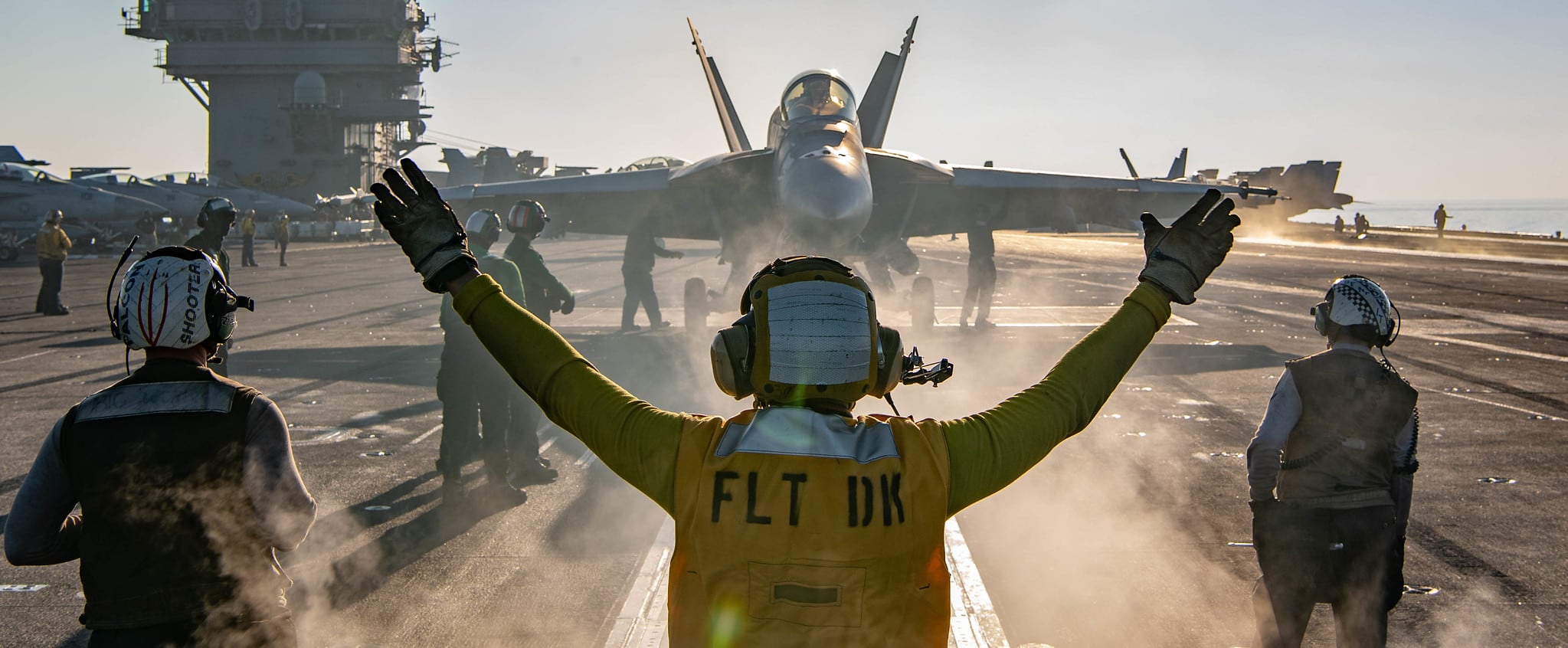The Marine Corps’ F/A-18 Hornet recently conducted its final aircraft carrier flight, ending nearly four decades of service to the Corps in the carrier-launched role.
The Feb. 25 flight marked the final Hornet carrier deployment for Marines, according to a Marine Corps statement.
Marine Attack Fighter Squadron 323, or VMFA-323, with 3rd Marine Aircraft Wing, will replace its Hornets with the F-35B Lightning II.
The final F/A-18 carrier deployment for the unit, known as the “Death Rattlers,” saw missions with both U.S. 5th and 7th Fleets.
Pilots logged more than 35,000 flight hours, 14,000 missions supporting tactical recovery of aircraft and personnel and landings and the use of nearly 250,000 rounds of ammunition while supporting the Nimitz Carrier Strike Group.
The Hornet was designed for multiple roles including air interdiction, air defense, air defense suppression, aerial reconnaissance, fighter escort and, of course, close-air support.
The jet entered operational service with the Marines with Marine Corps squadron VMFA-314 at Marine Corps Air Station El Toro, California in early 1983, replacing the F-4 Phantom.
The aircraft entered combat for the first time in 1986, used to suppress air defense systems in Libya in what was known as Operation Prairie Fire, providing cover as U.S. ships conducted freedom of navigation operations near the Libyan coast in response to terrorist attacks in Rome and Vienna, according to a 1986 article in Proceedings magazine.

The jet was used extensively in the Persian Gulf War in 1991. The jet was adopted for use in missions previously run by the A-6 Intruder when that aircraft was retired in the 1990s. The Hornet was again used heavily in the Iraq War.
Marine Lt. Gen. Jon Davis, then-deputy commandant for aviation told the House Armed Services Committee in 2017 that the service was struggling to get the aging Hornets flight ready, pushing for faster fielding of the F-35B, its eventual replacement, according to U.S. Naval Institute.
Plans at the time called for the Corps to continue to lean on the Hornet until 2030. But Davis pushed for faster fielding to end reliance on the Hornet by 2025, saving money and improving safety.
The three-star told Congress just two years prior, in 2015, that one in five of Marine aircraft were grounded for maintenance, the most prevalent on that list being the Hornet. By the end of 2016, that figure had doubled to 41 percent of all aircraft grounded for maintenance concerns.
And again, the Hornets were the worst of the bunch. At the end of 2016 only 72 out of 280 Hornets could fly.
Those figures did not include 109 aircraft headed to depot-level maintenance, which is controlled by the Navy.
Marine Corps Times reported then that the legacy Hornets were being brought in for depot-level maintenance to increase its service life from 6,000 to 10,000 flight hours. The aircraft were only designed to withstand 6,000 hours of service life.
In January, the VMFA-223, also based out of Marine Corps Air Station-Miramar, California, flew its last flight with the Hornet. That unit is also transitioning to the F-35B.
Todd South has written about crime, courts, government and the military for multiple publications since 2004 and was named a 2014 Pulitzer finalist for a co-written project on witness intimidation. Todd is a Marine veteran of the Iraq War.





